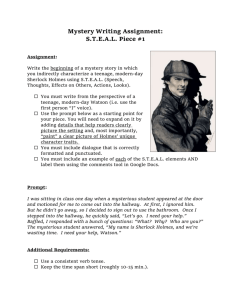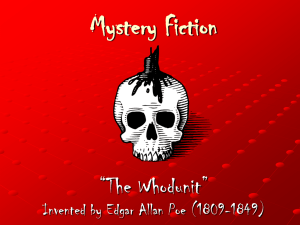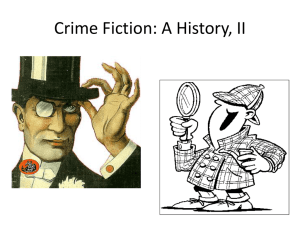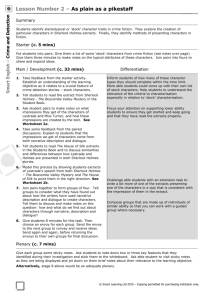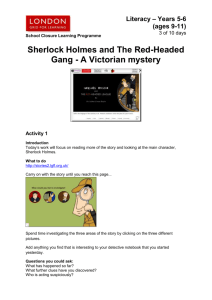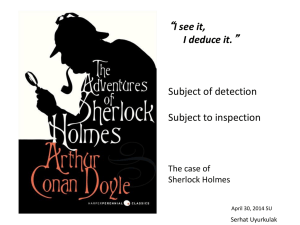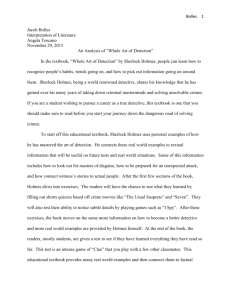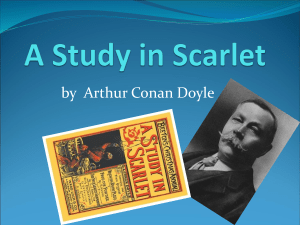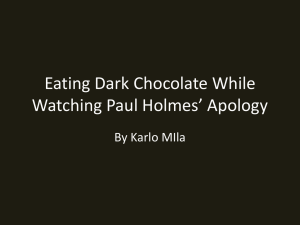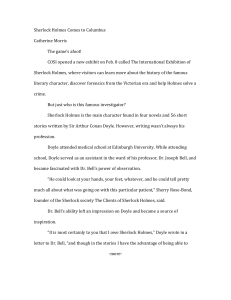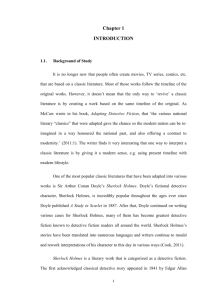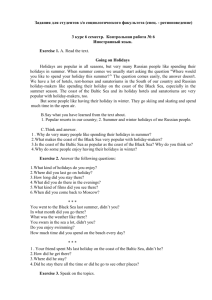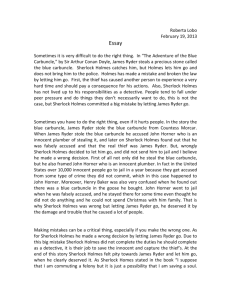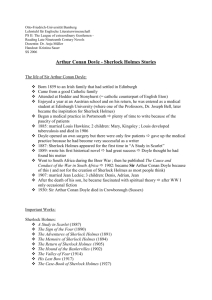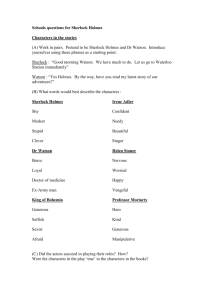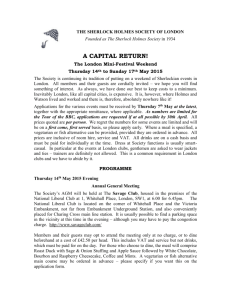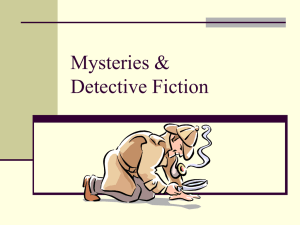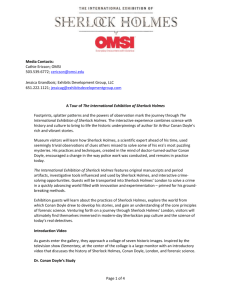Introduction to Sherlock Holmes
advertisement
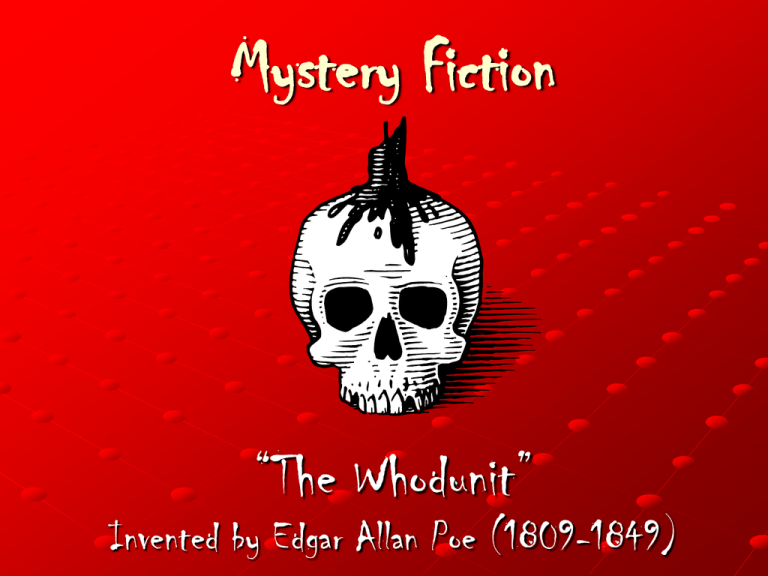
Mystery Fiction “The Whodunit” Invented by Edgar Allan Poe (1809-1849) Elements of Mystery Fiction / Detective Stories Creepy Settings Forests or desolate natural places Dark places or night-time atmospheres Run-down buildings Elements of Mystery Fiction / Detective Stories Mysterious Characters Super detectives as protagonists—can solve crimes the police can’t Detective’s friend often serves as narrator Criminals as antagonists Elements of Mystery Fiction / Detective Stories Suspenseful Plots Crime is committed (usually murder) Suspects are identified and investigated Expert detective examines evidence, deduces solution Solution is revealed to the characters and reader Elements of Mystery Fiction / Detective Stories Specialized Themes Good will triumph over evil. The truth will always come out. People get their just rewards. Crime doesn’t pay. Even the smallest detail is important. Sir Arthur Conan Doyle Born 1859 in Scotland Studied Medicine and became a doctor in 1885 Began writing in 1887, A Study in Scarlet– 1st Sherlock Holmes story Wrote dozens of Sherlock Holmes stories for the Strand magazine Killed off Sherlock Holmes in 1893 because he was tired of writing that kind of fiction Brought Holmes back ten years later due to fan outrage Knighted in 1902 by Edward VII Works of Sir Arthur Conan Doyle Sherlock Holmes Fiction A Study in Scarlet (1887) The Sign of Four (1890) Adventures of Sherlock Holmes (1892) Memoirs of Sherlock Holmes (1893) The Hound of the Baskervilles (1902) Return of Sherlock Holmes (1905) The Valley of Fear (1915) His Last Bow: Some Reminiscences of Sherlock Holmes (1917) Case-book of Sherlock Holmes (1927) Other Works Fiction The White Company (1891) The Great Shadow (1892) The Lost World (1912) The Poison Belt (1913) Non-Fiction The Great Boer War (1900) The War in South Africa: Its Cause and Conduct (1902) The British Campaign in France and Flanders (1916-1920) Sherlock Holmes Amateur Detective Based on Dr. Joseph Bell Solves crimes by using deduction—looks at clues Knowledgeable in Chemistry, Botany (poisons), Criminal cases, Anatomy Can tell where people are from and what their occupation is by looking at them Sherlock Holmes Plays the violin badly Smokes pipe & at times, opium When goes out wears hunting cap and cape Partner is Dr. Watson Some people believed he was a real person Chief antagonist is Dr. Moriarty Avoids romantic attachments Excerpt from A Study in Scarlet Website http://www.sherlock-holmes.co.uk/ The Adventure of the Speckled Band Sir Arthur Conan Doyle Terms Clue—anything that serves to guide or direct in the solution of a problem, mystery, etc Red Herring—something that diverts attention from the actual facts of a case; a misleading clue Motive—reasons to commit the crime Means—resources to commit the crime Opportunity—chances to commit the crime Clues from Connection to the Helen’s Story story / red-herring Clues from Connection to the Stoke Moran story / red-herring Deduction (How do you think Julia’s murder occurred?) SUSPECT: Person suspected of committing the crime MOTIVE: Reason to commit the Crime MEANS: Resources to commit the Crime OPPORTUNITY: Chance to commit the crime Stoke Moran Wing of the house in use Dr. Roylott’s Room Julia Stoner’s Room Helen Stoner’s Room Setting Julia Stoner’s Room Dr. Roylott’s Room Stoke Moran Wing of the house in use Helen Stoner’s Room Julia Stoner’s Room Dr. Roylott’s Room
